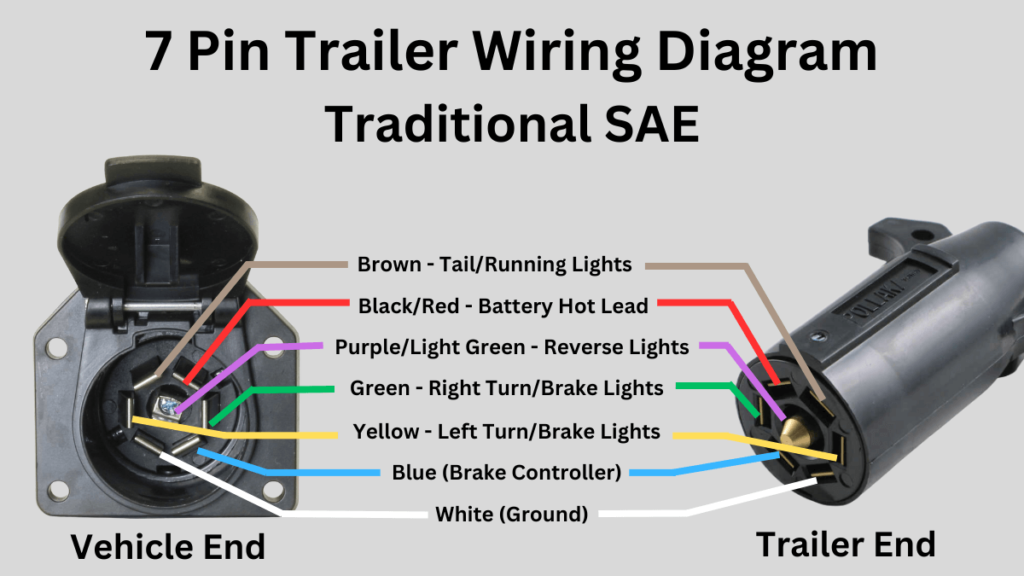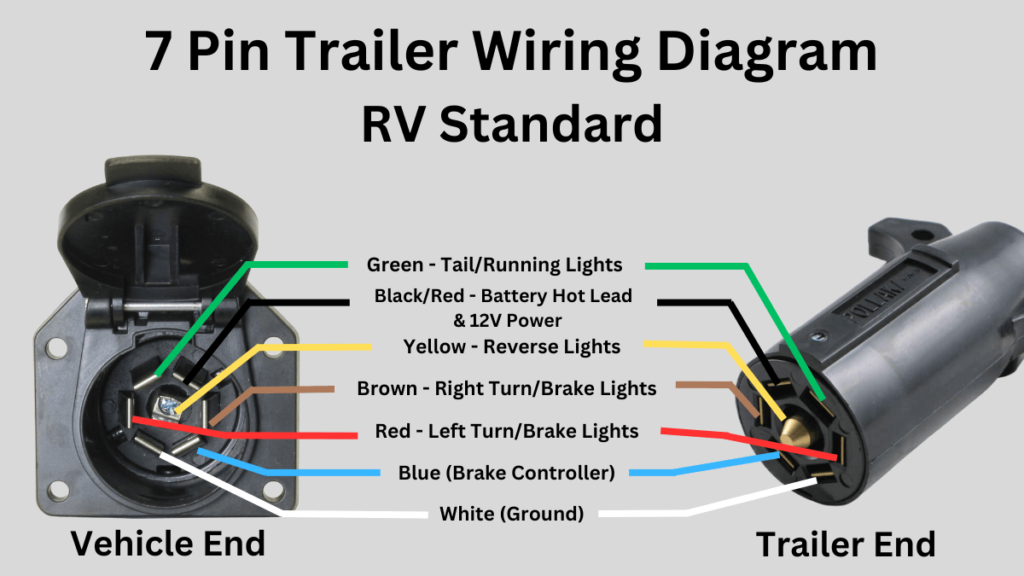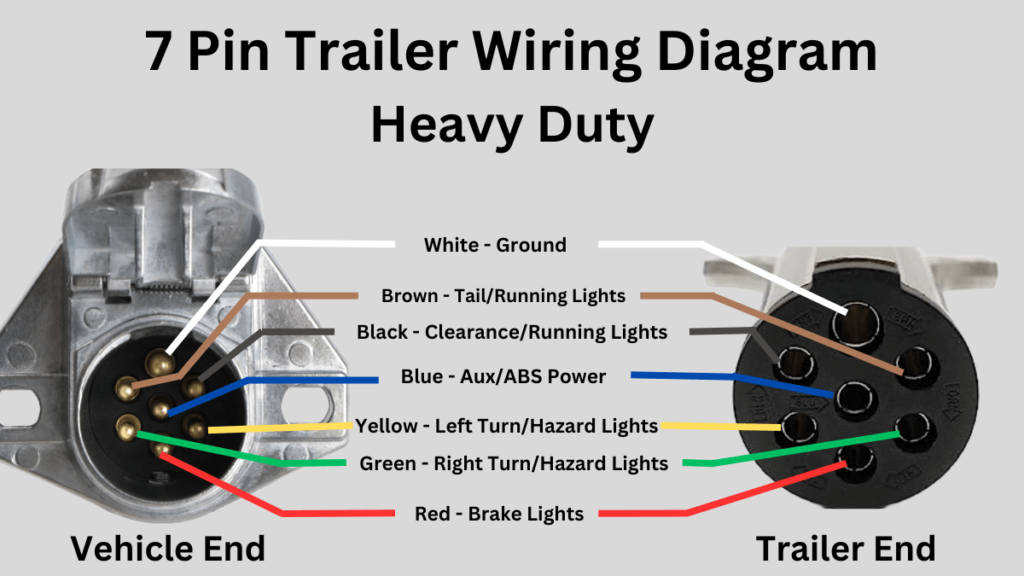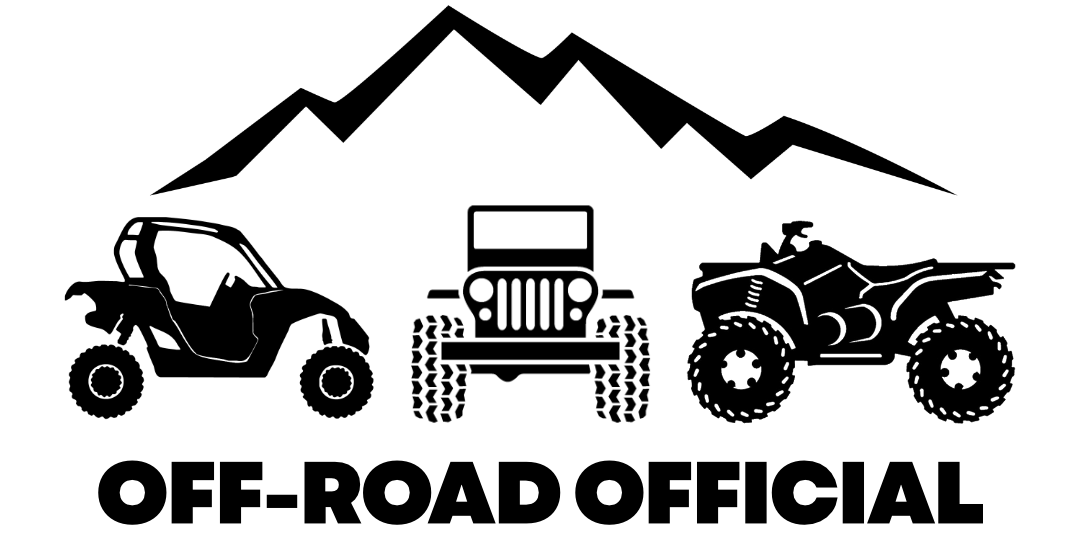Getting your 7 pin trailer wiring right is the most important aspect of connecting a trailer to your vehicle, besides properly physically connecting the trailer itself.
This guide will help ensure you get this right so that all your tail lights, brake lights, turn signals, batteries and other trail functions sync properly so you can avoid a potential ticket from the fuzz.
This guide will provide you the following:
- The 7 pin wire color coding for each trailer type (standard, RV, heavy duty)
- The 7 pin trailer wiring diagram for each trailer type (standard, RV, heavy duty)
- Descriptions and illustrations of where and how to properly connect all wiring
7 Pin Trailer Wiring – Color Codes
There are seven different electrical wires that connect and sync the 7 pin trailer connector with your vehicle.
That said, the wiring harness in the majority of vehicles will contain eight different wires, and sometimes even more.
These wires are all color coded with a different color or color combination to help you in matching each one with the correct pin.
For those with eight wires, there is usually an optional light blue wire that can be used for a third brake light if towing a camper shell, which can otherwise be ignored.
Below are the universal color codes for 7 pin trailer wiring for each type of trailer.
Traditional SAE Trailer Wire Color Codes
- Green Wire – right brake light and right turn signal
- Yellow Wire – left brake light and left turn signal
- Brown Wire – running lights and tail lights
- White Wire – ground wire that gives excess electrical charges a safe place to go
- Blue Wire – brake power and/or electric brake control
- Black or Red Wire – battery hot lead and 12V auxiliary power
- Light Green or Purple Wire – Reverse lights
While these codes are universal, you may find that the wiring colors vary slightly on some vehicle makes and models.
The Dodge Ram is one of these models where the wiring configuration is a bit different from that of the universal color coding found in most other vehicles.
RV Standard Trailer Wire Color Codes
While the wiring in your standard RV trailer will be mostly the same colors as those found in your traditional SAE trailer, many of the wire colors will serve a different purpose.
- Green Wire – running lights and tail lights
- Yellow Wire – Reverse lights
- Brown Wire – right brake light and turn signal
- White Wire – ground wire that gives excess electrical charges a safe place to go
- Blue Wire – brake power and/or electric brake control
- Black Wire – battery hot lead and 12V auxiliary power
- Red Wire – left brake light and turn signal
Heavy Duty Trailer Wire Color Codes
- Green Wire – right turn signal and hazard light
- Yellow Wire – left turn signal and hazard light
- Brown Wire – tail lights and running lights
- White Wire – ground wire that gives excess electrical charges a safe place to go
- Blue Wire – brake power/control and aux power
- Black Wire – clearance and running lights
- Red Wire – brake lights
7 Pin Trailer Wiring Diagrams
Below are the 7 pin trailer wiring diagrams for each of the three main types of trailers.
Even if your wiring color codes do not match up with that of the universal color coding listed earlier, the functions of each of the wires (regardless of color) will still match up with the same pins in the wiring diagram.
7 Pin Trailer Wiring Diagram – Traditional SAE

7 Pin Trailer Wiring Diagram – RV Standard

7 Pin Trailer Wiring Diagram – Heavy Duty

7 Pin Trailer Wiring
The 7 pin trailer connector is by far the most common trailer connector there is these days, and is universal with pretty much any make and model of vehicle.
If you’ve bought a trailer somewhat recently, there’s a very good chance it features this 7 pin connector plug.
To accommodate this, most modern vehicles that feature a trailer hitch also come equipped with a 7 way connector socket near the hitch where the trailer connector plugs in and syncs all the electrical components.
If you have an older trailer or vehicle, you may find that you have one of the following connectors rather than the standard 7 pin connection:
- Four-way wiring connection
- Five-way wiring connection
- Six-way wiring connection
If you find that you have one of these non-standard connectors on your vehicle or trailer but also a 7 pin connector on the other end, you’ll need to do one of two things:
- Use an adapter that can sync the two different types of connectors, which is the easiest option.
- Convert the non-standard connector to a 7 pin connector by replacing it, which is the more difficult option.
Before syncing your vehicle with your trailer, it’s important to know which type of trailer you’re using and the functions of each of the different colored wires on the trailer connectors which can be found above.
Three Main Types of Trailers
There are three main types of trailers, all with slightly different colored wiring and connectors.
- Traditional SAE
- RV Standard
- Heavy Duty
Traditional SAE – this is going to be the most common trailer you’ll find and include utility trailers, equipment trailers, or cargo trailers.
If you’re pulling a boat, off-road vehicle, or hauling materials of some sort this will most likely be what you’re using to do so.
RV Standard – if you’re pulling an RV, this is likely going to be what you’re using.
Heavy Duty – these are going to be your commercial or agricultural trailers, used for tougher jobs and to carry very heavy loads.
If you’re using a flatbed trailer to tow construction materials (think lumber, steel, heavy machinery), a dump trailer (stones, gravel, soil), or car hauler trailers to tow one or multiple vehicles, this is likely what you’re using.
While each trailer type is similar in terms of their different wiring connections, there are some slight differences as well.
Confirming Your Wiring Configuration
If you suspect that your wiring configuration is not universal, or if some or all of the trailer functions don’t seem to be working when connected, you can confirm what each wire does with the help of a circuit tester.
If you don’t seem to be getting a signal from the wires when using a circuit tester, check the fuse box under the hood of your vehicle to ensure the necessary fuses for the towing connection are installed.
If you’re looking to sync a trailer with your Chevy truck, occasionally these fuses will not be installed from the factory and you’ll need to take care of it on your own for the trailer functions to properly sync.
Conclusion
It’s highly important when towing a trailer behind your vehicle that each function is working correctly to ensure safe travel.
While electrical work can be intimidating for those of all experience levels, this 7 pin trailer wiring diagram should make it easier on you.


